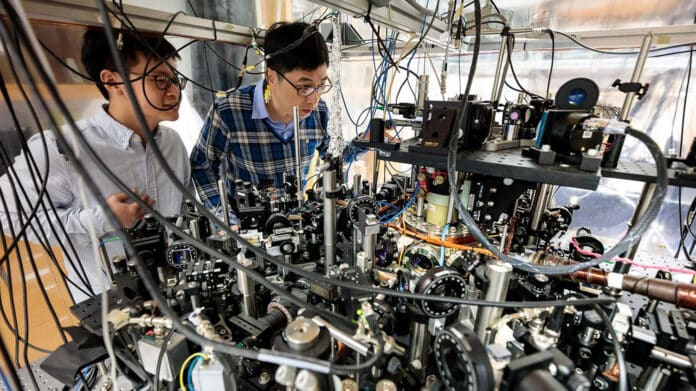The mixing of matter-wave fields describes chemical reactions in the quantum degenerate regime. In many-body reactions involving bosonic reactants and products, such as coupled atomic and molecular Bose-Einstein condensates, quantum coherence and bosonic enhancement are key features of the reaction dynamics.
However, observing these many-body phenomena, also called superchemistry, remains elusive.
In a new study, a team from the University of Chicago reported the first evidence for “quantum super chemistry.” Quantum superchemistry is when particles with the same quantum state undergo collective accelerated reactions.
Their findings, according to scientists, pave the toward a new field.
When all particles are in the same quantum state close to absolute zero, they can link together and exhibit extraordinary abilities and behaviors.
Although it had been hypothesized that a collection of atoms and molecules in the same quantum state would behave differently during chemical reactions, an experiment never verified the hypothesis.
Although Chin’s team has expertise in herding atoms into quantum states, because molecules are bigger and more complicated than atoms, the team had to develop novel methods for controlling them.
During experiments, scientists colled down the cesium atoms and coaxed them into the same quantum state. They next determine if the atoms reacted to form molecules.
In ordinary chemistry, the collision of individual atoms could lead to the formation of a molecule. On the other hand, in quantum mechanics, atoms in a quantum state perform actions collectively.
Cheng Chin, a professor of physics and member of the James Franck Institute and Enrico Fermi Institute, said, “You are no longer treating a chemical reaction as a collision between independent particles, but as a collective process. All of them are reacting together, as a whole.”
“Another consequence is that the final molecules share the same molecular state. The same molecules in different states can have different physical and chemical properties—but sometimes you want to create a batch of molecules in a specific state. In traditional chemistry, you’re rolling the dice. But with this technique, you can steer the molecules into an identical state.”
Shu Nagata, a graduate student and co-author of the paper, said, “We saw evidence that the reaction was taking place as a three-body interaction more often than a two-body interaction. Three atoms would collide; two would form a molecule, and the third would remain single. But the third played some role in the reaction.”
Although this experiment was performed with simple, two-atom molecules, scientists look forward to working up to handle larger, more complex molecules.
Journal Reference:
- Zhang, Z., Nagata, S., Yao, KX. et al. Many-body chemical reactions in a quantum degenerate gas. Nat. Phys. (2023). DOI: 10.1038/s41567-023-02139-8
